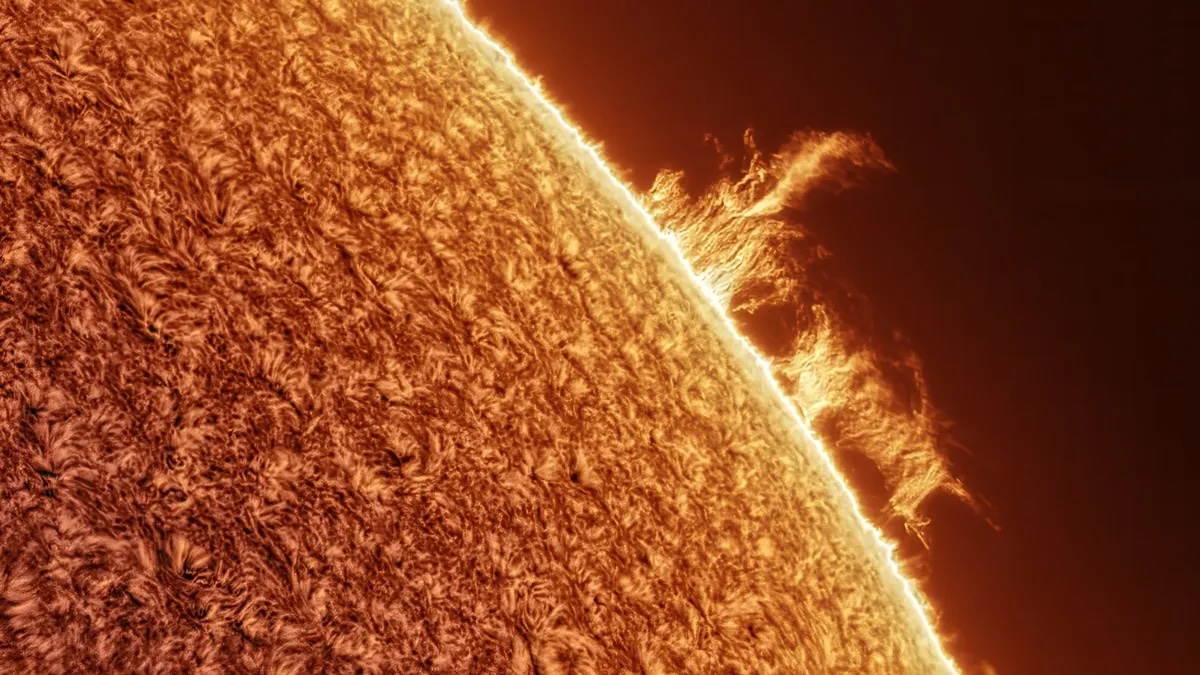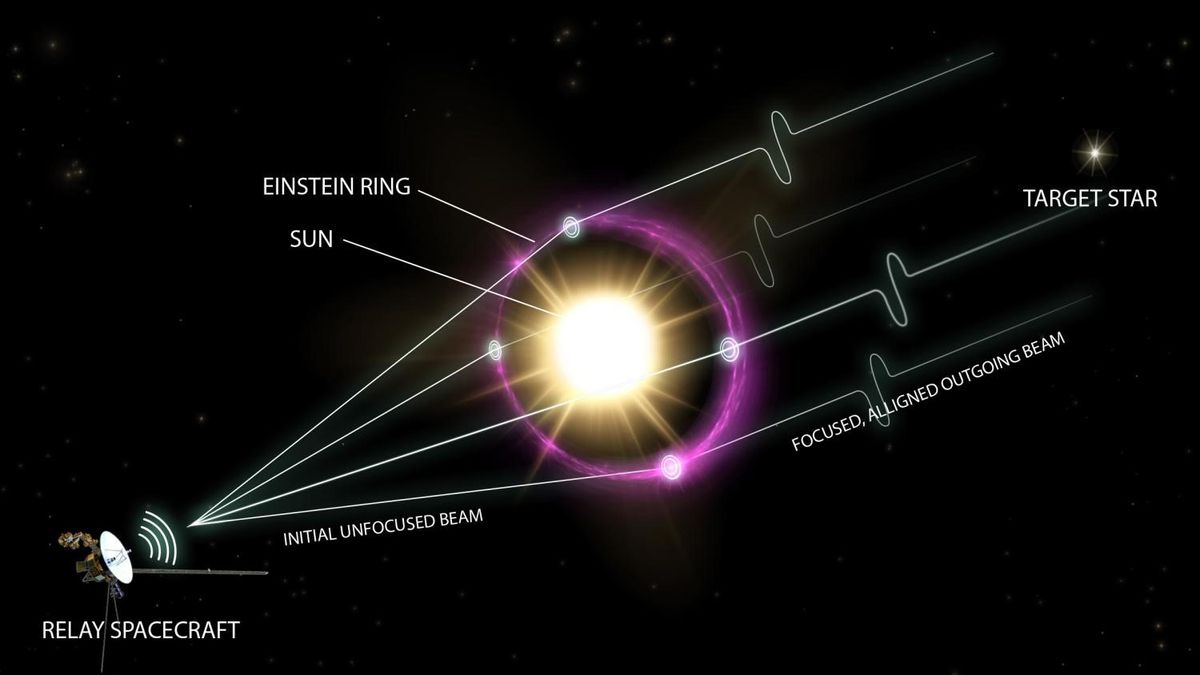Could we turn the sun into a gigantic telescope?
Using a phenomenon known as gravitational lensing, it might be possible to use the sun as a gigantic telescope to peer deep into space.

We have some incredibly powerful telescopes that have given us spectacular views of the cosmos and allowed us to look back to the early days of the universe. These observatories, such as the James Webb Space Telescope (JWST), are amazing feats of engineering that have required billions of dollars and decades of work.
But what if we could access an even better telescope that already exists? This wouldn't be a typical telescope. It wouldn't even come with a lens. But it would be by far the most powerful telescope we'd ever built.
This telescope would use the sun itself.
To give some perspective on how powerful a sun-based telescope could be, consider JWST. With a mirror that's 21.3 feet (6.5 meters) in diameter, JWST is capable of achieving a resolution of around one-tenth of an arcsecond, which is about 600 times better than the human eye. At that resolution, the telescope could see the details on a coin placed 25 miles (40 kilometers) away from it or pick up the pattern of a regulation soccer ball sitting 342 miles (550 km) away.
Another example is the Event Horizon Telescope, which is really a network of individual instruments scattered across the globe. By carefully coordinating its elements, the telescope has given us impressive images of the disks of gas surrounding giant black holes. To achieve that, it managed an impressive resolution of 20 microarcseconds. At that resolution, the telescope could spot an orange sitting on the surface of the moon.
Related: Monster black hole is starving its host galaxy to death, James Webb telescope reveals
But what if we wanted to go even bigger? A larger telescope would need either gigantic dishes or networks of antennae flying through the solar system, both of which would require enormous leaps in our technological capabilities.
Sign up for the Live Science daily newsletter now
Get the world’s most fascinating discoveries delivered straight to your inbox.
Thankfully, there just so happens to be a giant telescope already available, sitting right in the center of the solar system: the sun.
While the sun may not look like a traditional lens or mirror, it has a lot of mass. And in Einstein's theory of general relativity, massive objects bend space-time around them. Any light that grazes the surface of the sun gets deflected and, instead of continuing in a straight line, heads toward a focal point, together with all the other light that grazes the sun at the same time.

Astronomers already use this effect, called gravitational lensing, to study the most distant galaxies in the universe. When light from those galaxies passes near a giant cluster of galaxies, the mass of that cluster amplifies and magnifies the background image, allowing us to see much farther than we normally could.
The "solar gravitational lens" leads to an almost unbelievably high resolution. It's as if we had a telescope mirror the width of the entire sun. An instrument positioned at the correct focal point would be able to harness the gravitational warping of the sun's gravity to allow us to observe the distant universe with a jaw-dropping resolution of 10^-10 arcseconds. That's roughly a million times more powerful than the Event Horizon Telescope.
Of course, there are challenges with using the solar gravitational lens as a natural telescope. The focal point of all this light bending sits 542 times greater than the distance between Earth and the sun. It's 11 times the distance to Pluto, and three times the distance achieved by humanity's most far-flung spacecraft, Voyager 1, which launched in 1977.
So not only would we have to send a spacecraft farther than we ever have before, but it would have to have enough fuel to stay there and move around. The images created by the solar gravitational lens would be spread out over tens of kilometers of space, so the spacecraft would have to scan the entire field to build up a complete mosaic image.
Plans to take advantage of the solar lens go back to the 1970s. Most recently, astronomers have proposed developing a fleet of small, lightweight cubesats that would deploy solar sails to accelerate them to 542 AU. Once there, they would slow down and coordinate their maneuvers, building up an image and sending the data back to Earth for processing.
While it may seem outlandish, the concept isn't too far from reality. And what would we get with this kind of supertelescope? If it were aimed at Proxima b, the nearest known exoplanet, for example, it would deliver a 1-kilometer resolution. Considering that plans for successors to JWST hope to achieve imaging capabilities of exoplanets where the entire planet sits in a handful of pixels, the solar gravitational lens puts those ideas to shame; it's capable of delivering an exquisite portrait of the detailed surface features of any exoplanet within 100 light-years, let alone all the other astronomical observations it could achieve.
To say this would be better than any known telescope is an understatement. It would be better than any telescope we could possibly build in any possible future for the next few hundred years. The telescope already exists — we just have to get a camera in the right position.
Originally posted on Space.com.

Paul M. Sutter is a research professor in astrophysics at SUNY Stony Brook University and the Flatiron Institute in New York City. He regularly appears on TV and podcasts, including "Ask a Spaceman." He is the author of two books, "Your Place in the Universe" and "How to Die in Space," and is a regular contributor to Space.com, Live Science, and more. Paul received his PhD in Physics from the University of Illinois at Urbana-Champaign in 2011, and spent three years at the Paris Institute of Astrophysics, followed by a research fellowship in Trieste, Italy.










